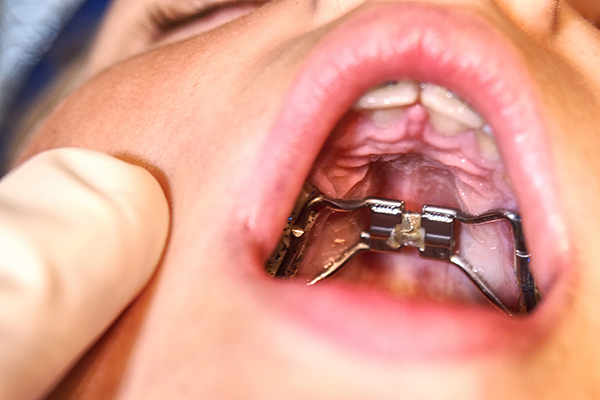Orthodontic Expanders: Commonly Asked Questions

Orthodontic expanders optimize most of a child's natural teeth growing process by correcting or stopping malocclusions or misalignment. By progressively broadening the upper jaw, the palate expander assists an orthodontist in creating extra room in a child's mouth. Although the appliance may appear or sound intimidating at first, it works gradually and painlessly. Discover the answers to five questions that parents often ask about orthodontic expanders.
What is an orthodontic expander?
An orthodontic expander is a customized orthodontic device that fits over several upper teeth at the rear of the mouth. The device consists of two sides that are screwed together in the middle. Each day, a specific key is used to initiate the turn screw. The palatal bones start to expand and drift apart slowly. The appliance will stay in the mouth for about three to six months after getting the necessary expansion, so new bone can develop in the space and stabilize the development.
Why is it necessary?
There are three instances in which a child's palate may need to be expanded.
Crossbite: For an abnormally small upper jaw that fails to connect properly with the lower jaw, the rear top teeth will align inside instead of outside the lower teeth. A patient with a narrow palate may have a crossbite, and this can lead to unequal lower jaw development, which if not rectified, can cause facial asymmetry.
Overcrowding: A orthodontist can tell if there will be adequate room for a child's permanent teeth even before they fully emerge. Without having to pull any teeth, they can make room by broadening the upper jaw.
Impacted teeth: An impacted tooth is one that has not yet erupted but is obstructed by other teeth. The canines are the most usually affected. The upper jaw can be widened to provide enough room for a tooth to slip down into the right place independently.
Breathing Problems: Breathing via the nose might be challenging for a child with a narrow or deep upper jaw. Constant mouth breathing results in unfiltered bacteria inhalation, dry mouth, and other health problems.
How can one adjust an expander?
It is the responsibility of the parent or guardian to turn the orthodontic expanders at the intervals recommended by the orthodontist once it has been implanted in the child's mouth. The device's rotation is what expands the upper jaw. Aside from the set of instructions, the child's dentist will provide a specially designed key that fits into an opening in the device.
What are the common side effects?
As the upper jaw extends and widens, orthodontic expanders can cause discomfort and pain. Other side effects include jaw ache, headaches, sinus pressure, speech difficulties, high saliva production, and a gap between the front teeth. Food particles can also get lodged between the device and the roof of the mouth.
In conclusion
If you think that your child might benefit from orthodontic expanders, talk to the orthodontist. Book an appointment today to get started.
Request an appointment here: https://valleyranchorthodontics.com or call Valley Ranch Orthodontics at (972) 200-1016 for an appointment in our Irving office.
Check out what others are saying about our services on Yelp: Read our Yelp reviews.
Related Posts
The first thing to do when experiencing a toothache is to assess the tooth and surrounding area. Sometimes, the reason for a toothache is obvious; other times, not so much. Depending on the cause of a toothache, seeking the help of an orthodontist may be more appropriate than a general dentist. The following article will…
Properly aligned teeth boost confidence in your smile and support good oral health. Finding an orthodontist with the skill set and experience you need is important. If you are still trying to figure out where to start, we have some advice to make your search easier. Rather than spending hours hunting for an orthodontist, you…
No matter how old a person is, almost anyone can benefit from teeth straightening. However, it is important to find an orthodontist for teeth straightening because they are ADA-recognized specialists in treatments to align the bite and straighten teeth. Working with an orthodontist to correct alignment problems with the teeth offers a host of benefits…
Invisalign® has become a popular option for teeth straightening as it offers an array of benefits that other options do not. Specifically, holistic dentists recommend Invisalign® due to the relatively natural approach that the treatment offers. Having an understanding of holistic dentistry is important, as it then allows individuals to consider specific treatment options, such as…


